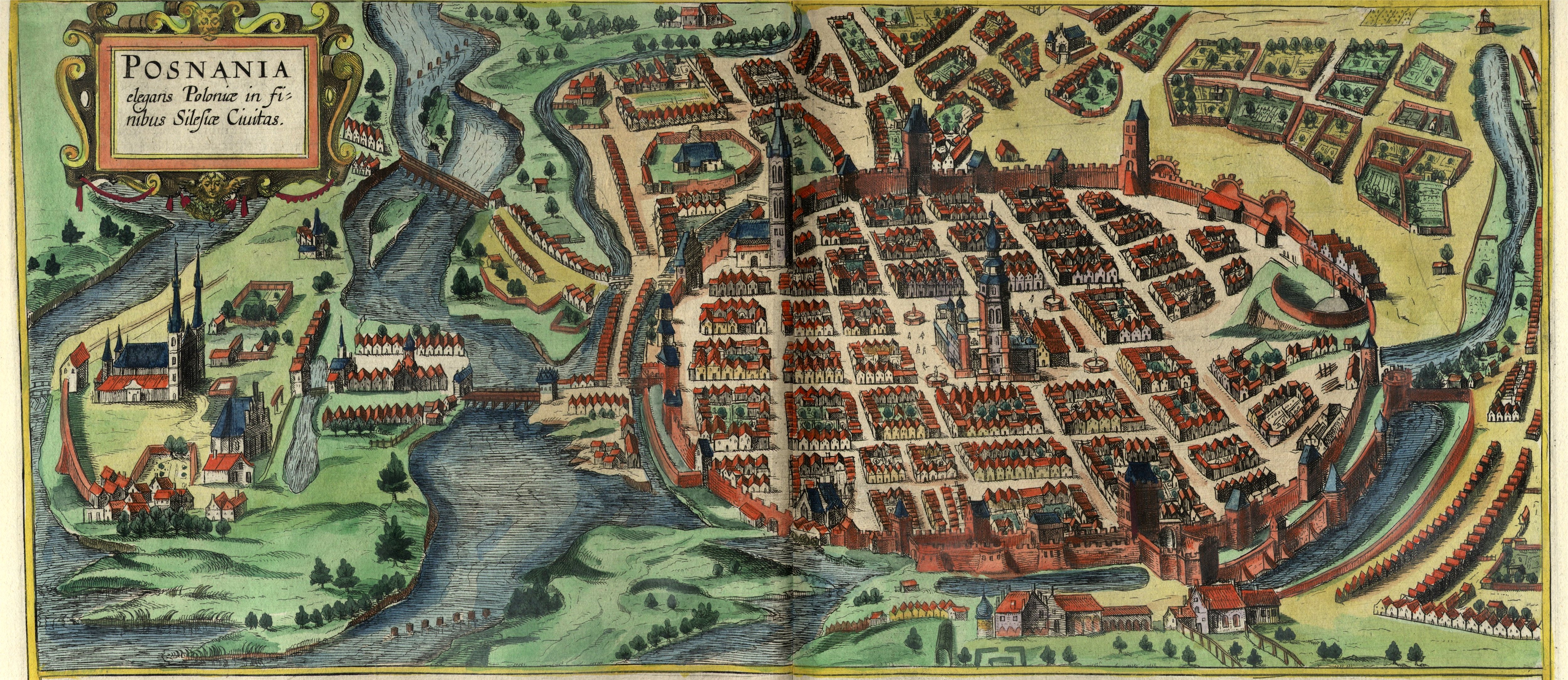The research is posted in the article, "Matrimonium sub fibe Judaica contractum: Were mixed Christian-Jewish marriages possible in late medieval Poland?" by Tomasz Jurek, found in the book Central and Eastern Europe in the Middle Ages: A Cultural History
When examining the consistory court records from Poznan, Jurek uncovered two cases which grabbed his attention. The first, from 1431, involves a woman named Hedwig who was suing a man named John, who had recently converted from Judaism to Christianity. According to Jurek, Hedwig was suing John "to compel him to consummate his marriage with her, 'in the face of the Church.' This is because she had been meeting with him for over a year, when he was still an adherent to Judaism. Over that year, he solemnly reiterated to her, invoking God, that he planned to receive baptism, that he wished to take her as a wife, and that he promised her marital fidelity."
Hedwig's lawyer added that she and John were already living together and having sexual relations before he converted to Christianity, and produced four witnesses, two men and two women, to back her claim. Meanwhile, John acknowledged the while he did have this relationship, that he could not legally be accountable for this marriage, since at the time he was still "a sly Jew." The court ultimately acquitted John, with the lawyer for Hedwig stating that they would immediately appeal the decision to a higher court.
"What is of fundamental importance for us is to specify the exact subject of this conflict," Jurek writes. "The woman was demanding a confirmation, in facie ecclesie, of a marriage which, as she maintained, she had previously entered into with John per verba. Here we are encountering a reference to a practice, still current at the time, of entering into marriage by means of utterance, before witnesses, of the appropriate words - words which expressed a declaration of choice of a spouse, and a promise of due fidelity to that spouse."
Marriages like this were widespread among the poorer segment of the population. While the judge did not ultimately side with Hedwig, Jurek notes that he took his time in delivering his decision - over two months - and also that he did not chastise the woman for having sexual relations with a Jew.
The second case from the consistory courts Jurek cites is from 1429, where a nobleman named Gregory of Gulcz is bringing suit against a Jewish woman named Jochna of Poznan. What interested in Jurek was the note in the record where it states that the defendant was represented by a Master Nicholas Mlynek, who is described as Jochna's 'proctor and husband.' (procurator et maritus). Jurek believes that this entry could not have been a scribal error, but could have been "a deliberate act of scarasm on the scribe's part.'
But Jurek is able to show that neither Jochna or Nicholas were married to anyone else for several years around this date, so it could be possible for two to be having some sort of marriage or form of concunbinage. If so, it would represent a union between two high ranking members of Poznan' society - Nicholas, a court official, and Jochna, who was one of the wealthiest Jewish women in the city.
The article notes that both the Christian and Jewish communities had prohibitions on inter-religious marriage, and placed other restrictions on contact that was supposed to prevent any chance of sexual relations. The author even notes laws that were enacted in Poland as recently as 1420 which reinforced these prohibitions, but Jurek asks if these laws were seriously followed through on.
He writes, "the most significant outcome of this highly fragmentary study is one of methodological insight. An accurate picture of life of the Polish Jews, especially of their bilateral relations with the Christian society surrounding them, cannot be drawn from a mere analysis of different kinds of normative documents, or from fragmentary remarks in the historiography. What is necessary is a broad and comprehensive inquiry into sources reflecting court practice, which by the Later Middle Ages, are quite ample."
